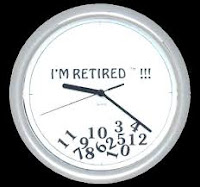 A month ago today I fell. My first thought as I landed on the Stambaugh Auditorium backstage floor was that, hopefully, my wrist/arm/hand was just bruised and I would get myself off the floor and walk to the stage to start the Barber of Seville overture for our 45-minute presentation for the local elementary, middle, and high school children. I had spent the previous two months mastering this very difficult piano transcription. As I lay crumpled on the floor, more than 400 kids were finding their seats.
A month ago today I fell. My first thought as I landed on the Stambaugh Auditorium backstage floor was that, hopefully, my wrist/arm/hand was just bruised and I would get myself off the floor and walk to the stage to start the Barber of Seville overture for our 45-minute presentation for the local elementary, middle, and high school children. I had spent the previous two months mastering this very difficult piano transcription. As I lay crumpled on the floor, more than 400 kids were finding their seats.
When I tried to lift my arm off the floor, I looked in horror as my left hand just dangled from the wrist. I knew instantly that I was in big trouble.
My earlier post about the accident gives all the details of that first day.
My fall occurred on Friday, Nov. 30. On Wednesday, Dec. 5 (my older son's birthday), I was Dr. J. J. Stefancin's first appointment of the day.
The nurse showed me the x-ray sent over by Northside Hospital ER. (See photo above) She pointed to the right side of the radius, where the break occurred, and I could see the bulge of pulverized bone. She told me Dr. Stefancin would have to manually compress the bone back into place before casting my wrist. She assured me he would deaden my wrist before applying this pressure. Then I explained to her that I had started playing piano at age 3½ and wanted to be able to continue when the cast was off. She quickly excused herself and I waited for the doctor to appear. (I learned later that she had gone to alert the doctor to my musical abilities. He would quickly determine that compression and casting would not be my answer!)
In a few minutes the nurse returned with the doctor and the intern. Dr. Stefancin looked long and hard at the x-ray, asked me a few questions, then said I would need surgery. He used his pen as a straight line to illustrate what the wrist joint should look like as compared to what my fall had caused mine to look like. Because of how the bone had disintegrated at the break point, a plate would have to be attached to the bone to give me normal function again. His staff quickly got on the phone and scheduled me into the Surgical Hospital at Southwoods. The scheduler snuck one more appointment into Friday afternoon and I was set to go.
 I would get a plate similar to the picture to the right. The four screws at the top secure it at the wrist, then several screws down the shank attach it to the radius. Now all that was left for me to do was to attempt to stay calm until Friday, two days away.
I would get a plate similar to the picture to the right. The four screws at the top secure it at the wrist, then several screws down the shank attach it to the radius. Now all that was left for me to do was to attempt to stay calm until Friday, two days away.The Jazzman arranged to have the day off to take me to the hospital and keep me from freaking out. To say I was impressed with this facility and every member of the staff with whom I interacted is a gross understatement.
The intake nurse, a compassionate man named David, was excellent at calming me. He shared stories with me about his teenaged son who plays trumpet, piano and guitar. Before inserting the IV needle into the back of my right hand, he asked my permission, telling me about the patient he once had who was a massage therapist and begged for the needle to go anywhere but in her hands. The anesthesiologist, Dr. Gemma, came in and, learning I sing with the Cleveland Orchestra Chorus, promised not to put the breathing tube down past my vocal chords. Further, given the risks of nerve damage in an "arm block" or "nerve block" and my desire to have the same abilities I had before my fall, he agreed that general anesthesia was the best solution. Dr. Stefancin came in briefly to reassure me that he had my best interests at heart. 
A couple of hours later I was awakened from a very involved dream to see that I was the only patient remaining in recovery. I was freezing and shaking. The nurse brought me a magical blanket into which hot air was circulating—I want one of those! To get over the shakes, the nurses kept reminding me to take deep breaths from the oxygen tube in my nose. And an hour later we were leaving the hospital.

And now I just wait. I'm in a brace. I alternate between pain, annoyance, and fear. Everyone who has been through a similar injury tells me that—after the pain and toil of physical therapy—I'll be playing my daddy's favorite "Alley Cat" again. And all our friends call and text and email and contact me on Facebook to let me know of their concern.
And my mantra is, "It could have been so much worse!"
All in all, I'm pretty lucky.

































